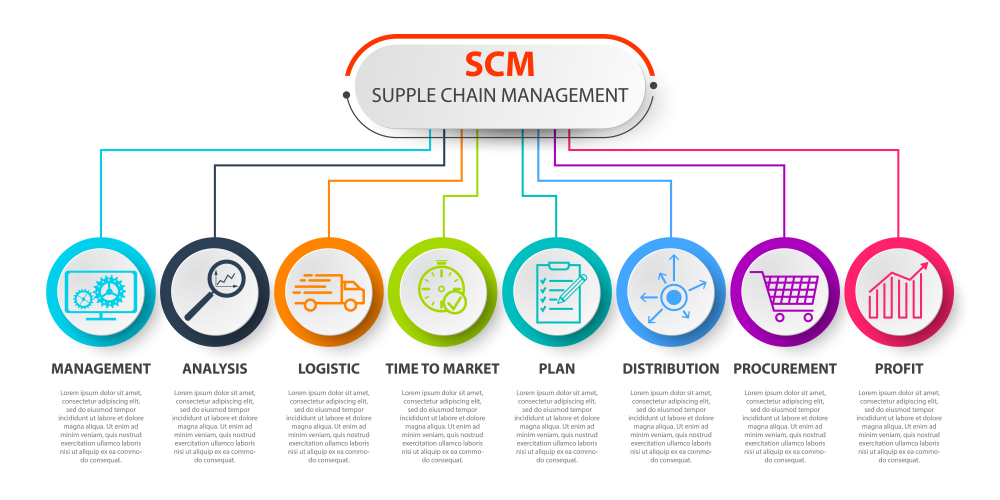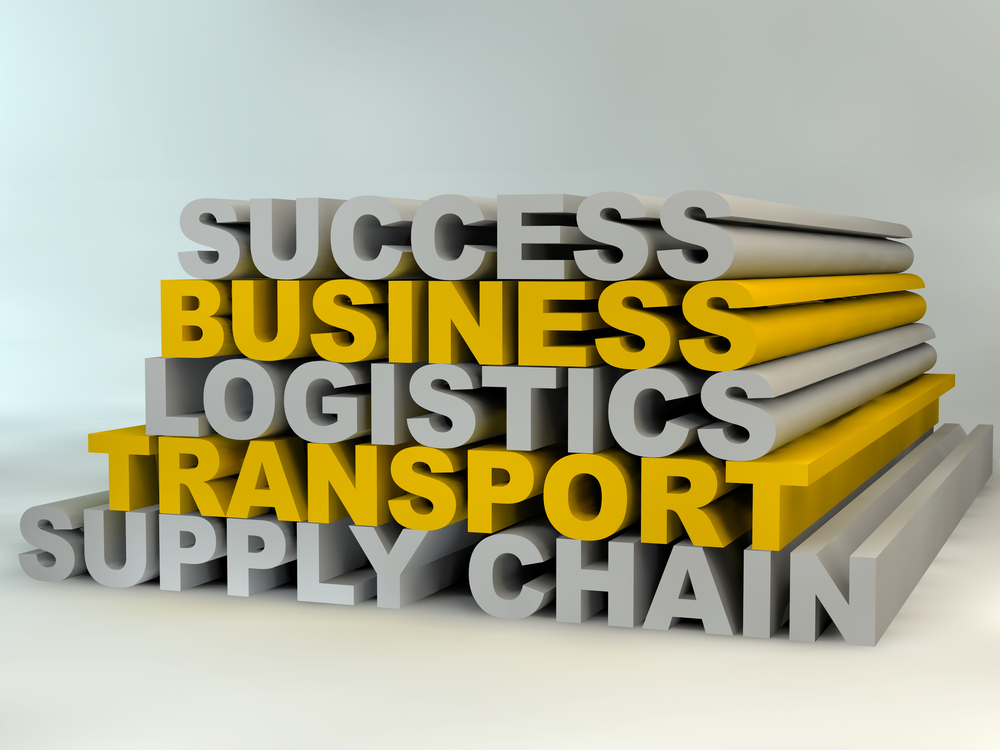Supply Chain Management
We are one of the leading logistics software company in Chennai
What Is Supply Chain Management and What Does it Mean for Business Operations?
At the most basic level, supply chain management (SCM) is the management of all elements related to a product or service — from procurement through delivery.
What is business operations and supply chain management?
OSCM encompasses functions that take place across a wide range of industries: manufacturing and service operations, including sourcing, materials management; operations planning—distribution logistics; retail demand forecasting order fulfillment.


What is the supply chain and its importance in operations management?
Supply chain management is the process by which businesses take raw materials and turn them into finished products, then transport and distribute those items to consumers. Supply chain management is a complex process that encompasses many different aspects of business. When done correctly, supply chain management can have a significant impact on the success of an enterprise.
Supply chain management includes the following areas:
✅ Supply planning and forecasting
✅Inventory management
✅ Distribution logistics and transportation
Is the supply chain part of business operations?
Supply chain operations include planning, managing, coordinating and controlling the flow of goods (products or services) from supplier to customer.
What are the key operations and supply chain processes, and what role do they play in creating value for customers?
Supply chain management is a five-part process: planning for raw materials, finding sources of supply, making products, delivering finished goods to customers and taking back merchandise from stores.
Supply chain sustainability
Build a More Sustainable, Resilient Supply Chain
For organizations with sustainability as part of their mission, the supply chain must be top priority. Why? Despite the environmental, social and governance (ESG) related impact that occurs along a company’s supply chain – including over 90% of its emissions associated with providing goods or services—up to 85% of ESG impacts are felt by brands when it comes to how their products affect people.² Without supply chain transformation, there can be no sustainability transformation.
Fortunately, organizations are taking steps to address this problem. A growing number of companies are setting sustainability goals for their supply chains, and many others plan to invest in circular economies that reduce waste through reuse or recycling.
Building a more sustainable supply chain
A sustainable supply chain, according to the World Economic Forum, is one in which ESG considerations are integrated from raw material production through delivery of the final product. More and more organizations are expanding the definition of a supply chain to include post-purchase processes like product returns or disposal. The notion of a circular economy—where products and materials are reused rather than thrown away—is key to supply chain sustainability.
Supply chains can be made more sustainable by minimizing greenhouse gas emissions, preserving resources through reduction, reuse and recycling while also meeting customer expectations. This will help tackle economic and social inequities as well through ethical sourcing practices — all of which is imperative in addressing climate change issues.
The Challenge: Turning ambition into meaningful action
It’s hard to do the right things to achieve your goals. Only 40% of companies have identified the initiatives needed, and only a third has integrated sustainability objectives and metrics into business processes. Many organizations struggle to improve their supply-chain management because they lack control over the many parts of it that are outside their direct influence. To overcome the barriers to sustainability, companies must leverage intelligent supply chain solutions that maximize visibility and traceability.
The importance of supply chain sustainability
Increasingly, stakeholders expect companies to take meaningful action on sustainability. This will have a long-term positive impact on profitability by helping prevent negative externalities that cost companies money and damage their reputation in the short term.
✅60% of consumers would change their shopping habits to reduce environmental impact, and more than 70% say traceability is very important.
✅According to research, 70% of employees are willing to stay at a company with a strong environmental agenda—and 10% would even take pay cuts for the opportunity.
✅Investors believe that businesses with good environmental and social policies are financially stable.
✅Governments and regulators are implementing sustainability requirements, while 60% of CEOs say they feel pressure to be more transparent about their organisation’s sustainability measures. As a result, previously voluntary frameworks for calculating corporate ESG performance have become mandatory.
Avoid wastage and excess inventory
To use inventory effectively and avoid waste and ageing, you need true end-to-end visibility and accurate materials planning. To remove data silos, you need a solution that provides real-time visibility across your global supply chain. As supply chains become increasingly volatile, teams that try to plan using manual tools with limited insight into the wider supply chain are no longer viable.
Benefits
✅Deliver end-to-end insights
Identify, using new intelligence and other data, a list of the most critical issues to address now.
✅Increase agility
Align supply chain participants with real-time, two-way communication to get the information they need when they need it.
✅Improve resilience
Use digital technologies to gain end-to-end visibility of your disputes, reducing the administrative costs associated with handling them.
✅Accelerate problem resolution
Reduce the time needed to recover from disruption in your supply chain from days to hours.
✅Reduce inventory
Reduce inventory levels by 18%. Reduce time needed to trace items from store to farm, going from 7 days down 2.2 seconds.
Features
✅Real-time, multi-enterprise visibility
Advanced analytics, end-to-end visibility and actionable workflows enable you to identify and resolve critical supply chain issues faster.
✅Actionable insights, predictions, and recommendations
Better decisions can be made with quality data. With our dashboard and reporting, you will have access to real-time information, analyses and predictions which empower you to act better than your competitors.
✅Cross-functional workflow orchestration
Use new technologies such as open platforms, artificial intelligence (AI), the Internet of Things (IoT) and automation to help tailor workflows to anticipate and respond quickly to complex supply chain challenges.
✅Product-specific traceability
Monitor and alert on inventory age in real-time to ensure that products are being replenished and sold at the right time.
✅Block chain-backed immutability and trust
Gain access to a block chain platform that allows companies to create their own data-sharing ecosystem with trusted supply chain partners.
✅Solution extensibility
Easily extend and personalize the solution to gain new insights and automate actions with custom data processing rules, dashboards, work queues—and more.